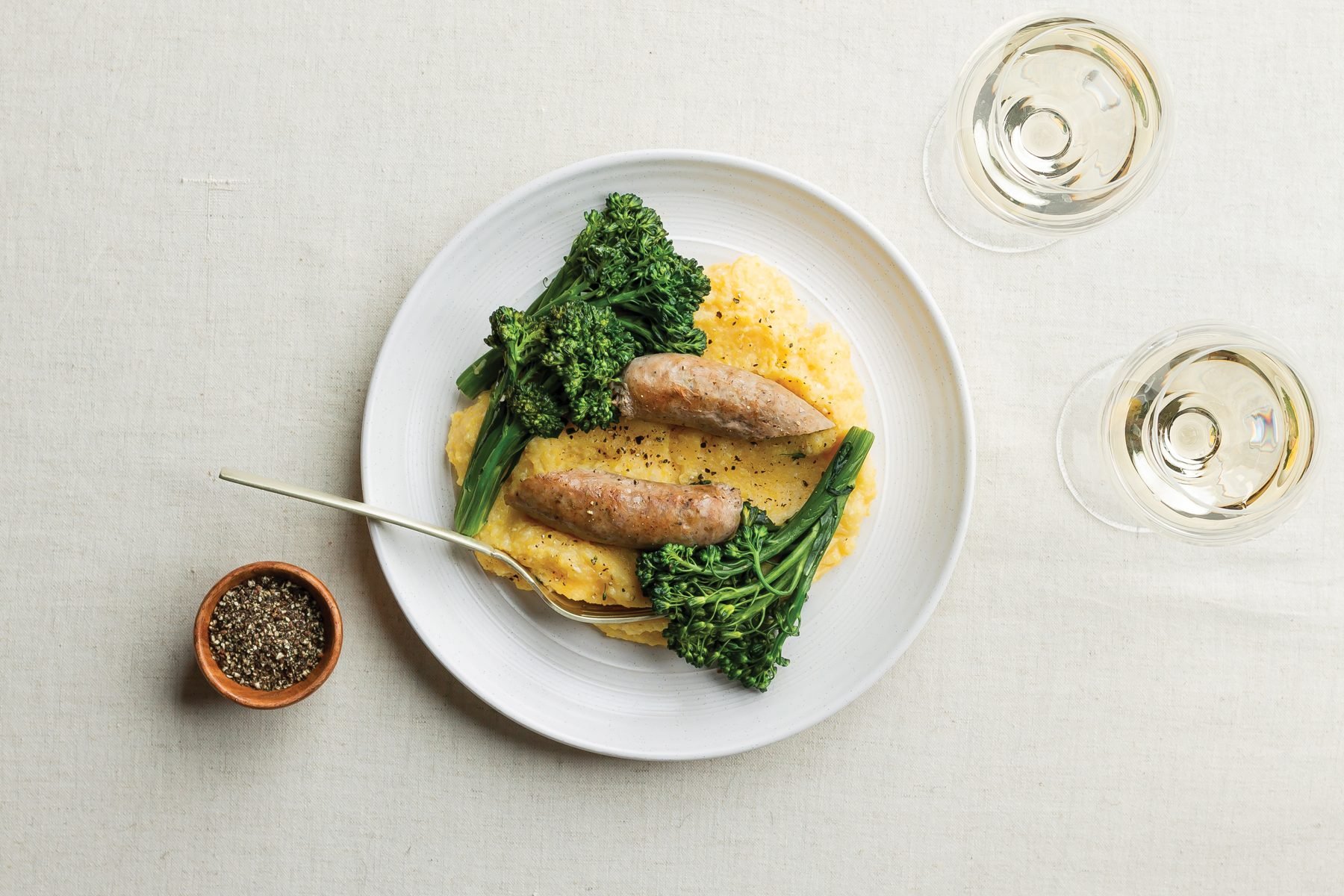Polenta with Sausage and Broccoli Rabe
No Reviews
Ingredients
Adjust Servings
| 1 pound uncooked polenta | |
| 5 tablespoons extra virgin olive oil, separated | |
| 1 teaaspoon garlic salt | |
| 4 pork fennel sausages (I strongly suggest Italian pork sausage. It goes very well with the slight bitterness of broccoli rabe) | |
| 1 cup white wine | |
| 2 pounds broccoli rabe | |
| 4 cloves garlic, chopped | |
| Pepper to taste |
Directions
1.
Clean the broccoli rabe and remove stems. Set aside.
Mark as complete
2.
Cook the polenta as per package instructions (1 part polenta, 4 parts water), and when done, stir in 2 tablespoons of extra virgin olive oil and garlic salt.
Mark as complete
3.
In a large pan place 1 tablespoon of extra virgin olive oil and the sausages, cooking over a low flame. After 4 to 6 minutes, when the sausages start to swell, pierce with a fork. Slowly add in the wine, and wait until completely dissolved.
Mark as complete
4.
In another medium pan place 2 teaspoons of extra virgin olive oil and sauté the garlic and broccoli rabe until the volume is reduced, and broccoli begins to look wilted. Add broccoli to the pan with the sausage and cook for 5 more minutes. Season with pepper. To plate, place 3 tablespoons of polenta, 1 sausage and 3 tablespoons of broccoli rabe per dish. Repeat for 3 additional plates.
Mark as complete


